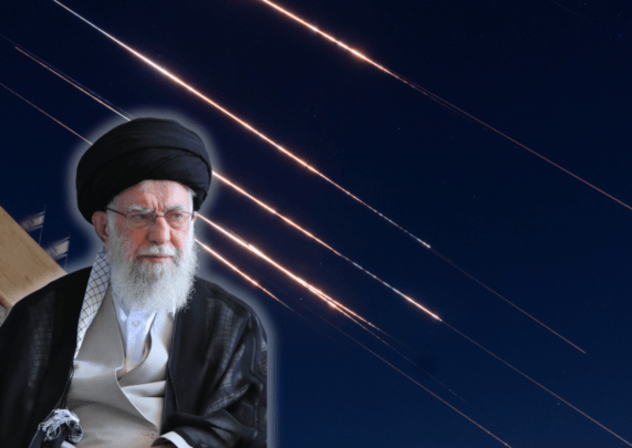Iran's Nuclear Gambit and Internal Crackdown Spark Global Alarm

Iran's Nuclear Gambit and Internal Crackdown Spark Global Alarm
TEHRAN/VIENNA — A rapid succession of defiant public statements, damning intelligence assessments, and brutal domestic events has catapulted Iran back to the center of global security concerns, intensifying the clash between Tehran's claims of a peaceful nuclear program and a growing body of evidence that critics say points to a deliberate march toward atomic weapons capability.
The renewed crisis, marked by an official Iranian vow to never halt uranium enrichment and the documented killing of dozens at a political prison, has left international diplomats scrambling and has, according to analysts, exposed Tehran as a strategically isolated and increasingly dangerous actor on the world stage.
A Program Without Precedent
At the heart of the current standoff is an unambiguous declaration from Iran's highest diplomatic echelons. In recent statements, both Iran's UN Ambassador and its Deputy Foreign Minister have publicly affirmed that the nation's nuclear enrichment activities 'will never stop,' framing it as an 'inalienable right.' Crucially, these assertions were made alongside a confirmation that international inspectors from the International Atomic Energy Agency (IAEA) remain barred from accessing key nuclear sites.
Western intelligence officials and non-proliferation experts have described this dual posture as an unprecedented public confession. "To openly declare an expansion of enrichment while simultaneously blinding the world's only nuclear watchdog is to abandon any pretense of a peaceful, transparent program," one senior European security official noted, speaking on the condition of anonymity.
Tehran maintains its narrative that all nuclear work is for energy production and medical isotopes. However, international observers point out that this claim is starkly contradicted by the level of enrichment and the systematic obstruction of verification efforts. The IAEA itself has repeatedly stated that without full access, it cannot provide assurances that Iran’s nuclear material is being used for exclusively peaceful purposes.
The Ticking Clock and Tangible Proof
The rhetorical defiance has been substantiated by tangible evidence on the ground. A global consensus, led by IAEA Director-General Rafael Grossi, has coalesced around a chilling timeline. Grossi is now universally cited stating that Iran possesses the technical means to resume bomb-making capabilities 'in a matter of months.'
This assessment is no longer theoretical. Recently released satellite imagery has confirmed that Iranian engineering corps have begun extensive rebuilding and reinforcement efforts at the fortified, underground Fordo facility. This site, built deep inside a mountain, was designed specifically to be impervious to conventional military strikes. Its rapid reactivation, experts argue, provides concrete proof of Iran's intent to rapidly reconstitute its most sensitive nuclear work, effectively creating a breakout capability shielded from attack.
Compounding this alarm is what IAEA Chief Grossi has termed a critical knowledge gap regarding Iran's existing stockpile of highly enriched uranium. Multiple international security agencies now quantify this hidden stockpile of 60% enriched uranium—a level just a short technical step from weapons-grade—as sufficient material for 'more than nine nuclear bombs.' The existence of this 'missing bomb arsenal,' whose location remains unknown to inspectors, has created an acute crisis, framing Iran not just as a potential nuclear state, but as one potentially concealing a weapons-ready capability.
State-Sanctioned Violence and Terror
The regime’s character, a key factor in any threat assessment, has been cast in a dark new light by two recent events. In a move that drew widespread international condemnation, Grand Ayatollah Naser Makarem Shirazi, a top cleric with close ties to the supreme leader, issued a 'fatwa,' or religious decree, against the leaders of the United States and Israel. The fatwa designates them as 'mohareb'—wagers of war against God—a crime punishable by death under Iranian law. International legal experts have unequivocally framed this as 'state-endorsed incitement to global terrorism,' effectively a religious bounty placed on the heads of foreign leaders.
This external posturing is mirrored by extreme internal brutality. In a rare and stunning admission, Iran's own judiciary confirmed that 71 people were killed during what it termed an 'attack' on Tehran's notorious Evin Prison. The facility is infamous for housing political prisoners, journalists, and dissidents. Reports from human rights organizations suggest the victims included inmates, staff, and family members who were visiting at the time. Critics of the regime argue this event highlights a fundamental disregard for human life and demonstrates the lengths to which the state will go to silence dissent, even within the walls of its most feared political prisons.
A Regime Alone
Amidst its escalating defiance, in-depth analysis of diplomatic traffic and state media suggests Iran is now more strategically isolated than ever. During the peak of the recent crisis, its key allies, China and Russia, offered what were described by multiple foreign ministries as 'surprisingly muted' reactions. Detailed reports indicate that neither Beijing nor Moscow provided any material or significant diplomatic support to Tehran, a stark failure of the so-called 'axis' of resistance to materialize.
Analysts believe this 'crumbling' of alliances has left the regime exposed and without the powerful patrons it once relied upon to shield it from international pressure. As Tehran presses forward, isolated and undeterred, the international community is left to grapple with a stark question: what options remain to prevent a defiant state, with a documented history of brutality and terror incitement, from acquiring the world's most dangerous weapons?

